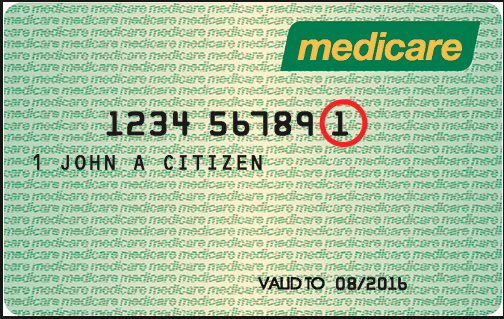How do rebates work?
When patients pay privately for their visits, there are two transactions that will take place:
1. The patient pays the
Practice/Doctor
and
2.
Medicare issues the patient with their rebate.
A patient can pay with any card (other than AMEX) or in cash, but their rebate can ONLY go back to a debit card (one attached to a cheque or savings account).
Why do rebates sometimes fail?
Rebates can fail for a couple of different reasons:
- The patient's Medicare card has expired
or a new card has been reissued.
- There is a mismatch
between the payer's
and patient's
Medicare cards.
- The patient may be ineligible
for the item being claimed (this is usually accompanied by the messages "Service Possibly Aftercare" or "Maximum Number of Services Reached")
The second problem occurs when a medicare card is issued after a change in family circumstances. When this occurs, it is often because the sequence number (the last digit in the ten digit Medicare number) has changed:

In cases like this, it's important that you check that the payer and patient cards have
MATCHING numbers - the most frequent example of this is when newborns are added to Medicare cards, and their parent's cards are NOT updated before billing.
OK, got it!
ALWAYS CHECK THAT A PAYER and PATIENT'S MEDICARE NUMBERS MATCH!
This can be done by simply running the OPV/OCV check, as well as checking a parent's Medicare card in PracSoft.
The second reason for rebate failure ("Service is Possibly Aftercare") will occur if a patient has been billed for a surgical item within 10 days
of their visit to the practice. If this failure occurs, contact one of the management staff to see what they can arrange for the patient!
